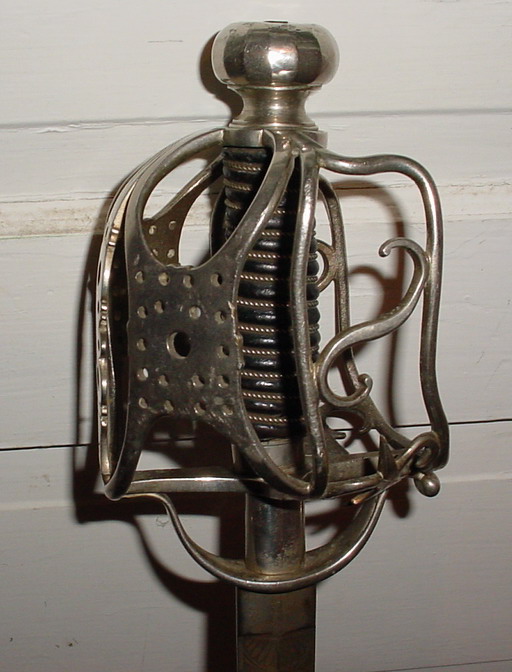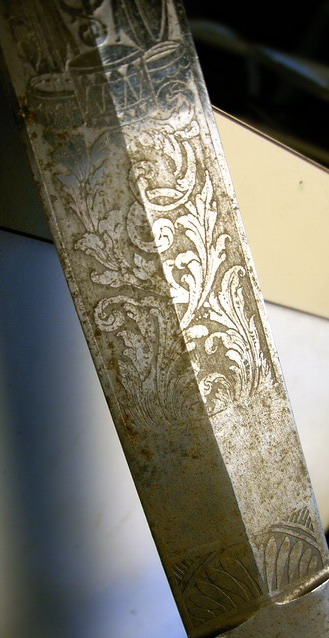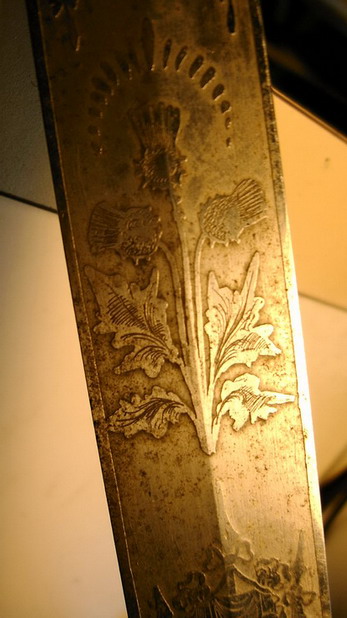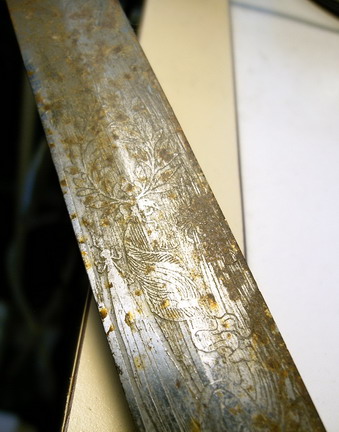









| Dave W. wrote: |
| I would agree that it is probably a Scottish basket-hilt. The thistle is a symbol of Scotland I think. It is an interesting one though. It's blade is different at the base, near the guard, from most baskit-hilts I've seen. It does seem to be of the backsword style, as opposed to the broad. Sorry I can't be more help. |
| Glen A Cleeton wrote: |
| The mark is of Weyersburg for sure but that family's use of it goes back at least to the 1780s. the Weyersburg and Kirschbaum association came to be in the 1880s. Previous to the 1780s, the Wundes family used various king's head marks.
I am no authority at all on baskethilts but use of German blades in England was quite common in the 18th century. Indeed, entire baskehilts were made in Germany as well. Silvered and gilt hilts well predate the 19th century. The Germans were doing a lot of nickle plate by the 1860s. The heavily etched blade would make me think later than the first quarter of the 19th century but the Weyersburg mark by itself in this context would make me consider it before the merge with Kirschbaum. Cheers GC |